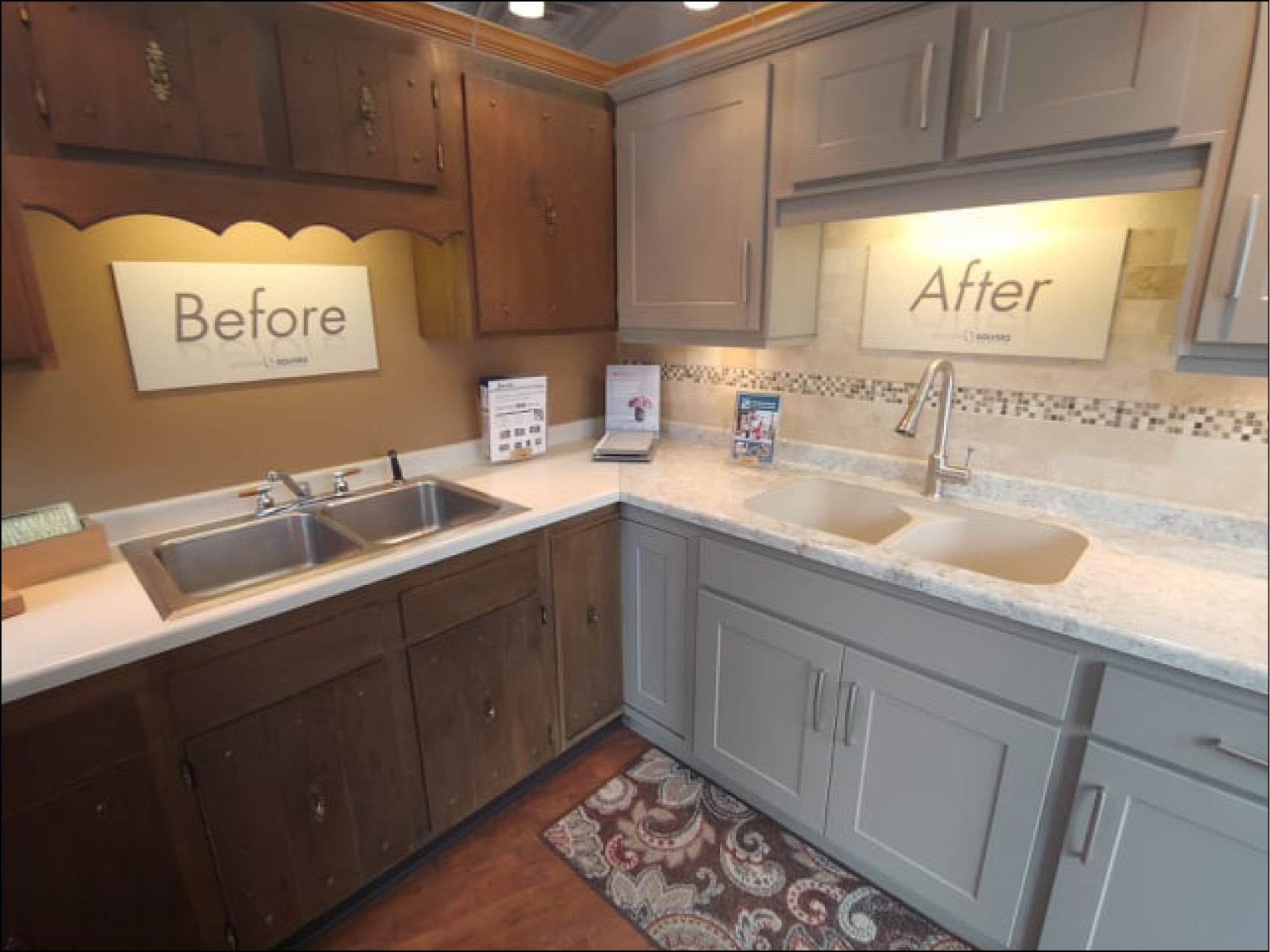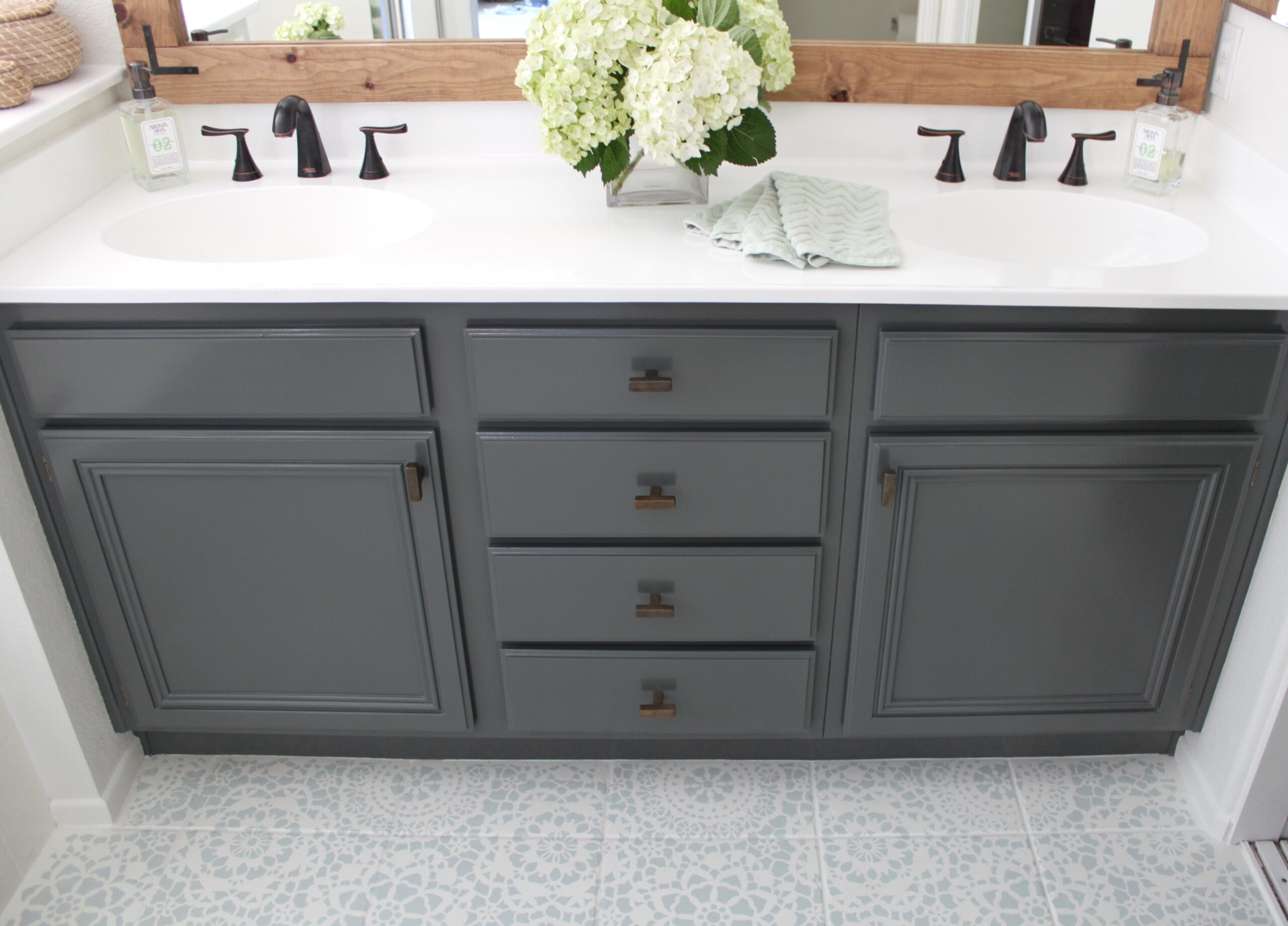Preparing for the Project

Transforming your bathroom cabinets from drab to fab is an exciting endeavor, but proper preparation is key to achieving a professional-looking finish. Choosing the right paint is paramount, especially in a high-moisture environment like a bathroom. Let’s dive into the essential steps to ensure your project is a success.
Choosing the Right Paint, Restaining bathroom cabinets do yourself
The paint you select for your bathroom cabinets plays a crucial role in their longevity and appearance. Moisture resistance and durability are essential qualities to consider.
- Moisture-Resistant Paint: Opt for paints specifically formulated for high-moisture areas. These paints are designed to withstand the constant humidity and prevent peeling or chipping. Look for labels like “bathroom paint,” “kitchen and bath paint,” or “alkyd enamel.”
- Durable Paint: Choose a paint with good adhesion and scratch resistance. Acrylic latex paints are a popular choice for bathroom cabinets due to their durability, ease of application, and low VOC content.
- Primer: Applying a primer before painting is highly recommended, especially if you are covering a dark color or have previously painted surfaces. A primer helps the paint adhere better and provides a smooth, even base for the top coat.
Gathering Tools and Materials
Having the right tools and materials on hand will make your project smoother and more efficient.
- Safety Equipment: Safety should always be a priority. Wear a respirator mask to protect yourself from paint fumes, safety glasses to shield your eyes from dust and debris, and gloves to prevent skin irritation.
- Tools:
- Screwdriver (Phillips and flathead)
- Hammer
- Level
- Measuring tape
- Paint scraper
- Sandpaper (various grits)
- Paintbrush or roller
- Paint tray and liner
- Drop cloths or plastic sheeting
- Cleaning supplies (soap, water, rags)
- Materials:
- Paint (primer and top coat)
- Paint thinner (if using oil-based paint)
- Masking tape
- Cabinet hardware (if replacing)
Preparing the Bathroom
Protecting your bathroom from paint splatters and dust is essential.
- Cover Surfaces: Use drop cloths or plastic sheeting to cover your bathroom floor, bathtub, sink, and any other surfaces that you don’t want to get paint on. Secure the coverings with painter’s tape to prevent them from shifting.
- Protect Flooring: If your bathroom floor is delicate or has a special finish, consider covering it with a thick layer of cardboard or a drop cloth.
Removing Cabinet Doors and Hardware
Removing the cabinet doors and hardware will allow you to paint the surfaces more easily and ensure a clean finish.
- Labeling: Before removing any hardware, use painter’s tape to label each piece and its corresponding location on the cabinet. This will help you reassemble the cabinets correctly later.
- Removal: Carefully remove the hinges from the cabinet doors and the hardware from the cabinet fronts. Set aside all screws and hardware in a labeled container.
Cleaning and Sanding Cabinet Surfaces
A clean and smooth surface is essential for a professional-looking paint job.
- Cleaning: Thoroughly clean the cabinet surfaces with a mild soap and water solution. Use a soft cloth or sponge to remove any dirt, grime, or grease. Allow the surfaces to dry completely before proceeding.
- Sanding: Sand the cabinet surfaces with fine-grit sandpaper (120-grit) to smooth out any imperfections and create a good surface for the paint to adhere to. Sand in the direction of the wood grain.
Painting the Cabinets: Restaining Bathroom Cabinets Do Yourself

The painting process is the most visible part of your cabinet makeover, and it’s where you’ll really see your vision come to life. Before you dive in, there are some key things to consider that will ensure a smooth and professional-looking finish.
Primer: The Foundation for a Durable Finish
Primer is an essential step in preparing your cabinets for paint. It acts as a bonding agent, creating a smooth, even surface that allows the paint to adhere properly. This is especially important in bathrooms, where moisture and humidity can cause paint to peel or chip over time. Primer also helps to hide any imperfections in the wood, such as knots or scratches, ensuring a uniform base for your paint.
Choosing the Right Paint, Restaining bathroom cabinets do yourself
The type of paint you choose will impact the durability and finish of your cabinets. Here’s a breakdown of popular options:
- Oil-Based Paint: This traditional choice offers excellent durability and a hard, glossy finish. It’s water-resistant and cleans up with mineral spirits. However, oil-based paints can take longer to dry and have a strong odor.
- Latex Paint: Latex paint is a water-based option that dries quickly, has low odor, and is easy to clean up with soap and water. It’s a good choice for bathrooms, as it’s mildew-resistant. However, latex paint may not be as durable as oil-based paint.
- Epoxy Paint: This specialized paint is incredibly durable and resistant to moisture, making it ideal for bathroom cabinets. However, it can be more challenging to work with and requires proper ventilation during application.
Applying Paint: Techniques for a Smooth Finish
- Prepare the Surface: Before painting, thoroughly clean the cabinets with a degreaser to remove any dirt, grime, or residue. Sand lightly to create a smooth surface for the primer and paint to adhere to.
- Apply Primer: Use a high-quality primer specifically designed for cabinets. Apply it evenly with a brush or roller, paying attention to corners and edges. Allow the primer to dry completely before moving on to the paint.
- Paint in Thin Coats: Apply multiple thin coats of paint rather than one thick coat. This will help to prevent drips and ensure even coverage. Let each coat dry completely before applying the next.
- Use Masking Tape: Masking tape is essential for creating clean lines and protecting areas you don’t want to paint. Apply it carefully to edges and trim, ensuring it adheres well.
- Work in Sections: Don’t try to paint the entire cabinet at once. Instead, work in manageable sections, allowing each section to dry before moving on to the next.
Painting Cabinet Doors and Drawers
Painting cabinet doors and drawers requires a bit more attention to detail, but with the right techniques, you can achieve a professional finish.
- Remove Hardware: Before painting, remove all hardware, such as handles, knobs, and hinges. This will ensure a smooth and even paint application.
- Paint Edges and Corners: Use a small brush to paint the edges and corners of the doors and drawers. Be sure to apply the paint evenly and smoothly, avoiding drips.
- Paint the Face: Once the edges and corners are dry, paint the face of the doors and drawers. Use a roller or brush to apply the paint evenly, making sure to cover the entire surface.
- Let Dry: Allow the paint to dry completely before reattaching the hardware.
Helpful Painting Techniques
- Use a High-Quality Brush and Roller: Investing in quality tools will make a big difference in the final finish. A good brush will distribute the paint evenly, while a high-quality roller will ensure smooth coverage.
- Clean Your Tools Regularly: Clean your brush and roller after each use to prevent paint from hardening and ruining the tools. This will also ensure a smooth finish for subsequent coats.
- Allow Adequate Drying Time: It’s important to allow each coat of paint to dry completely before applying the next. This will prevent smudging and ensure a durable finish.
Finishing Touches

The final steps in your bathroom cabinet restaining project are crucial for ensuring a durable and beautiful finish. These steps involve sealing the painted surfaces, reattaching cabinet doors and hardware, and cleaning up your workspace.
Protecting the Finish with Sealant
Applying a clear sealant to your freshly painted cabinets is essential for protecting the finish from moisture, stains, and wear and tear. A sealant acts as a protective barrier, enhancing the durability and longevity of your paint job.
- Types of Sealants: There are various types of sealants available, each offering different levels of protection and sheen. Common options include polyurethane, acrylic, and epoxy sealants. Polyurethane sealants are known for their durability and water resistance, making them ideal for bathroom cabinets. Acrylic sealants offer good protection and are generally easier to apply. Epoxy sealants provide the highest level of protection but can be more challenging to work with.
- Application Tips: When applying sealant, it’s crucial to ensure even coverage and avoid streaks. Use a high-quality brush or roller specifically designed for sealant application. Apply thin, even coats, allowing each coat to dry completely before applying the next. Avoid applying too much sealant, as this can lead to dripping and uneven coverage.
- Drying Time: Allow the sealant to dry completely according to the manufacturer’s instructions. This drying time can vary depending on the type of sealant and environmental conditions. Once the sealant is fully dry, you can proceed to reattach the cabinet doors and hardware.
Reattaching Cabinet Doors and Hardware
After the sealant has dried, it’s time to reattach the cabinet doors and hardware. This step requires patience and precision to ensure proper alignment and functionality.
- Alignment: Carefully align the cabinet doors and hardware before securing them. Use a level to ensure the doors are perfectly straight and plumb. Check for any gaps or misalignments and adjust accordingly before tightening screws or hinges.
- Hardware Installation: Reinstall cabinet knobs, pulls, and hinges, ensuring they are securely fastened. Test the doors and drawers to ensure they open and close smoothly without any obstructions.
Project Completion Checklist
Once the cabinet doors and hardware are reattached, it’s important to complete the project by cleaning up your workspace and disposing of materials properly.
- Clean Up: Dispose of all paint and sealant containers and cleaning supplies according to local regulations. Wipe down all surfaces with a damp cloth to remove any dust or debris. Vacuum the floor and remove any painter’s tape or drop cloths.
- Final Inspection: Take a final look at your newly refinished bathroom cabinets, admiring your handiwork. Ensure all doors and drawers open and close smoothly, and the paint and sealant are evenly applied and free of any defects.
Comparing Finishes for Bathroom Cabinets
Different finishes can significantly impact the appearance and functionality of your bathroom cabinets. Here’s a comparison of common finishes:
| Finish | Advantages | Disadvantages |
|---|---|---|
| Matte | Hides imperfections, creates a sophisticated look, low-maintenance | More prone to fingerprints and smudges, can appear dull |
| Satin | Combines the elegance of matte with a subtle sheen, good for high-traffic areas | May show imperfections more than matte, can be more challenging to clean |
| Gloss | Adds a high-shine look, easy to clean, reflects light | Shows imperfections, can be more prone to scratches, may feel too shiny for some tastes |
